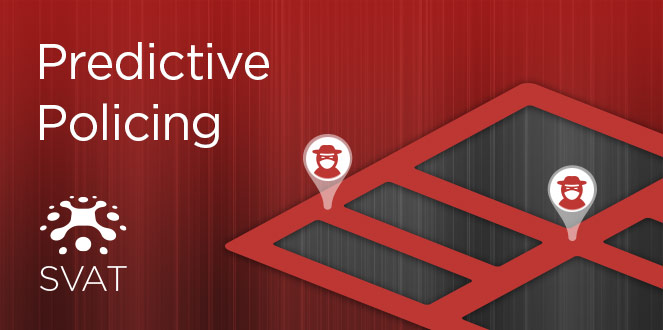
Posted on 1.10.2014 by ms
Catching bad guys before they commit their crimes is a really nice Minority Report style idea. But can it work? And is it even legal?
The Economist gave this newly emerging law enforcement technology a big endorsement about a year ago. The article had a really futuristic 21st century attitude (and a totally 20th century cover image) and the overall results of preventive policing techniques were promising:
During a four-month trial in Kent, 8.5% of all street crime occurred within PredPol’s pink boxes [areas marked by software as hazardous], with plenty more next door to them; predictions from police analysts scored only 5%. An earlier trial in Los Angeles saw the machine score 6% compared with human analysts’ 3%.
The biggest problem with those stats was, and still is, that they base their analysis mostly on reports/arrests. The key is so-called near repeat phenomenon (check out this cool near repeat calculator here). For example, with burglaries it has been proven over and over, that if some poor citizen’s house has been cleared by a bunch of misfits, it’s highly probable that other houses in the close vicinity will be too. By that logic, you can easily schedule patrols of squad cars in hazardous areas and prevent crime from happening. It is also possible to enrich the analysis with other levels of data such as weather, for example (for real, bad guys also do not like getting wet!). Burglary is a really common crime and (similarly to other common crimes like car theft) is widely reported. Less frequently reported crimes are practically impossible to avoid by “heatmap policing”.
Yeah, let’s face it: there is not much more to this method than making heat maps of specific crimes and crunching them with a couple of relatively simple algorithms. Since report- and arrest-based data are limited and not that effective, law enforcement agencies and their business partners are focusing on another angle: perpetrators. Data about perpetrators of crimes are also available – in government systems and also online, on social networks. You can actually predict crime by just checking the social networks. Among other things, you can get information on legal parties, radical political meetings and terrorist organizations’ secret channels. If you combine the right data from social networks with those the government already has, you can easily calculate possible perpetrators. But that’s when the big trouble starts.
The possible implications of privacy intrusion as related to the future of predictive policing will be discussed in the second part of our predictive policing series next week. In the meantime, feel free to follow us on Twitter or get in touch via email.
Catching bad guys before they commit their crimes is a really nice Minority Report style idea. But can it work? And is it even legal?
The Economist gave this newly emerging law enforcement technology a big endorsement about a year ago. The article had a really futuristic 21st century attitude (and a totally 20th century cover image) and the overall results of preventive policing techniques were promising:
During a four-month trial in Kent, 8.5% of all street crime occurred within PredPol’s pink boxes [areas marked by software as hazardous], with plenty more next door to them; predictions from police analysts scored only 5%. An earlier trial in Los Angeles saw the machine score 6% compared with human analysts’ 3%.
The biggest problem with those stats was, and still is, that they base their analysis mostly on reports/arrests. The key is so-called near repeat phenomenon (check out this cool near repeat calculator here). For example, with burglaries it has been proven over and over, that if some poor citizen’s house has been cleared by a bunch of misfits, it’s highly probable that other houses in the close vicinity will be too. By that logic, you can easily schedule patrols of squad cars in hazardous areas and prevent crime from happening. It is also possible to enrich the analysis with other levels of data such as weather, for example (for real, bad guys also do not like getting wet!). Burglary is a really common crime and (similarly to other common crimes like car theft) is widely reported. Less frequently reported crimes are practically impossible to avoid by “heatmap policing”.
Yeah, let’s face it: there is not much more to this method than making heat maps of specific crimes and crunching them with a couple of relatively simple algorithms. Since report- and arrest-based data are limited and not that effective, law enforcement agencies and their business partners are focusing on another angle: perpetrators. Data about perpetrators of crimes are also available – in government systems and also online, on social networks. You can actually predict crime by just checking the social networks. Among other things, you can get information on legal parties, radical political meetings and terrorist organizations’ secret channels. If you combine the right data from social networks with those the government already has, you can easily calculate possible perpetrators. But that’s when the big trouble starts.
The possible implications of privacy intrusion as related to the future of predictive policing will be discussed in the second part of our predictive policing series next week. In the meantime, feel free to follow us on Twitter or get in touch via email.